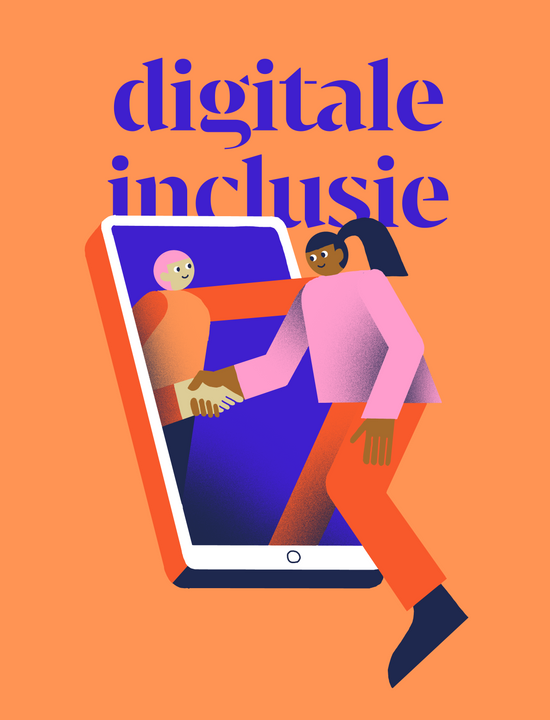Digital inclusion: a definition
The term ‘digital inclusion’ refers to the collective actions and solutions necessary to make sure everyone is digitally on board. For example, handing out laptops to school kids, creating a help desk in the library for anyone who needs support with online administration, or specific guidelines to make web applications user-friendly and inclusive.
Since more and more services are moving to the digital realm, the importance of digital inclusion should not be underestimated. With awareness, we can avoid vulnerable populations falling victim to digital exclusion.
4 prerequisites for digital inclusion
There are 4 prerequisites for digital inclusion: digital access, digital competences, a support network, and inclusion by design. By paying attention to these four factors, we can lower or even completely remove digital hurdles.
Digital access
Although 92% of Belgian households now have access to the internet, we can’t forget the 8% that are left behind. Within specific layers of the population, that number is significantly higher. For example, 1 in 5 low-income households have no internet access, and 16% of singles don’t have an internet connection at home.
Besides access to devices and the internet, there are other hurdles to consider:
- Number of devices per household. The lower the household income, the fewer digital devices are present. This can lead to issues when multiple people in the same household need device access simultaneously. Additionally, not every device is fit for every purpose. Low-income households often only have a smartphone, when many online applications require a laptop.
- Quality of the connection, devices, and software. If your internet connection or device is of low quality, this can prevent you from accessing certain websites or from following online classes.
Digital competences
Having access to devices and the internet does not automatically make a person capable of using them to their full potential. This requires digital competences: the collective knowledge (knowing), skills (being able) and attitudes (wanting, daring) necessary to venture into the digital world. Only with these competences can people function in digital society in an active, creative, critical, and conscious manner.
Another important requirement is for this set of competences to be as broad as possible for everyone. Being able to send an e-mail doesn’t automatically make you capable of understanding or recognising phishing e-mails. And creating an account on social media doesn’t necessarily mean that you know what happens to your data when you do. This is an area with work left to be done. For example, 55% of people with low education have no or limited digital competences. That’s bad news: research from the London School of Economics indicates that access to the internet while lacking digital skills mostly makes already vulnerable groups more vulnerable.
Support network
To develop digital competences, you need people around you who can help out when needed. This can be personal support (for example, a neighbour), professional support (like a local non-profit or a community centre), or a mix of both.
Digitally competent contacts can’t just help others learn, they are also essential for mitigating the impact of digital exclusion. If someone struggles to apply for unemployment benefits online, the consequences will be minimal if they have a proper support network to fall back on. A digihelper can make sure this person avoids missing out on their unemployment benefits due to a lack of digital skills.
Inclusion by design
Inclusion by design means taking into account the needs of diverse target audiences when designing websites, apps, and other digital tools. It’s important to avoid creating additional hurdles by developing unnecessarily complicated web apps. This prerequisite is the responsibility of product and web developers. The basic principles are:
- Use simple language. Make sure the message is clear for everyone.
- Create an intuitive and user-friendly platform. Users should be able to find their way around with ease, without needing a manual.
- Stick to WCAG guidelines. The Web Content Accessibility Guidelines provide guidance for creating accessible web applications.
- Design for smartphones. Create a platform that is easily accessible on mobile devices, since more vulnerable groups often only have access to a smartphone.
